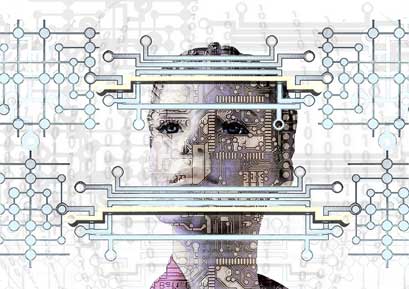
Pansensic leads us into the future to learn how customer service will be driven by developments in the customer experience industry.
Customer service has been, and will always be, the driving force that shapes consumers’ opinion of brands. So much so that Deloitte marks that 62% of companies feel that customer experience (CX) is what differentiates them from their competitors, whilst 52-66% of customers will stop purchasing from a company if they receive a negative interaction.
That is quite a lot of business to lose in light of something that can easily and quickly be changed. But the damage doesn’t just stop at the customer; the domino effect of a bad customer experience can ripple into their immediate circles (with a whopping 95% of consumers sharing negative experiences with their loved ones).
This doesn’t even take into account those who look towards online platforms to vent their frustration at companies, leaving bad reviews on Google, updating their social media status or even taking to YouTube to make a vlog about the whole experience! There is no place that companies can hide from bad reviews anymore – and you can be sure that customers will use an online megaphone to voice their concerns about your brand.

And why shouldn’t they moan? We’ve all been on the receiving end of bad customer experiences. In this day and age, it should be the number one mission of brands to keep their consumers happy – particularly returning visitors – and this is primarily centred around exceptional customer experiences.
It is widely known that loyal consumers are much more valuable to a business than trying to get new customers as, through this, you are able to gain a constant stream of purchases with lower efforts. The main way to create loyal customers is by creating an attentive CX that builds up a strong relationship with the customer each time they use your company. And this is not something that will change as we head into the future, that’s for sure, but the methodology which we apply will most certainly adapt for the better.

With this in mind, we now take a look at what the future of customer service will look like:
The Progression of AI in Customer Service
The evolution of technology over the past five years, in particular, has allowed customer service teams to expand their capabilities, especially through online services. Software is now able to handle a range of requests and enquiries to ensure quicker response times, whilst human resources can focus on high priority, and more complicated and personal, calls, messages and requests. In fact, 69% of people have linked a positive customer service experience with the speed of resolved requests; something which is benefitted by the assistance of software.
Within these technological advancements, developments in AI technology are expected to continue to grow over the coming years, with many non-tech organisations choosing AI and machine learning as their main focus for 2019. Even music and film companies, such as Netflix and Spotify, are now using AI to recommend music and films/programmes to clients based on their viewing/listening history. With non-tech businesses such as these taking full advantage of what AI has to offer, it would not be surprising if customer service teams evolve quickly over the next couple of years also to customise their service.

Cheaper Customer Service Solutions
For many businesses, outsourcing their customer service team to a call centre can rack up huge costs, but has become a necessity as their in-house teams struggle to keep up with the volume of requests. Estimations by IBM, however, put cost savings at around 60% to 80% for businesses who switch over to AI-powered services over traditional call centres, eliminating staff and training costs, and software can be adapted to meet the needs of the business.
With AI-assisted solutions, companies can expect to make substantial savings in the long-run. Take John Paul, for instance. The luxury travel company uses ‘predictive algorithms for existing-client interactions’ (Forbes) and, as a result, is able to comprehend the needs and wants of their customers quickly and efficiently. By understanding their clientele better through AI, companies are able to cater to their business better and, although implementing AI is initially going to cost, the time and money otherwise spent on human resources in the long run is saved. Not only is money saved, but time is freed up to allow employees to focus on other areas of the company that require a more human and personal touch.
Regardless of business size, new technology abilities are reinventing the customer service parts of businesses to become more efficient and more successful.

Social Media Communication
Many ecommerce websites are now harnessing the power of social media to mould better customer experiences. Companies such as KLM and Uber (among many) are using, in particular, the familiar interface of Facebook Messenger to perform customer service chats. And with Facebook opening its doors, somewhat, to AI chatbots for business, it would come as no surprise if a lot of customer service enquiries will come directly from social media platforms instead of the websites themselves in the near future.
Data Analysis Generating Insights for Change and Personalised Experiences
Every customer service interaction recorded produces essential qualitative data about consumers and their experiences with your company. Insights derived through the analysis of patterns and trends can be used for major growth in customer experiences and marketing efforts, even assisting companies to create better, personalised experiences that will help them gain and maintain competitive advantages. As consumer expectations hone in on personalisation, it will be the responsibility of companies to utilise effective data analysis in order to provide this.
According to the Segment’s 2017 State of Personalization Report, 71% of consumers find impersonal experiences frustrating. This figure is only set to rise as a new era of personalised customer experiences dominates the commercial world. And how exactly do businesses create personalised customer experiences? Through customer data, of course!

Jamie Thorpe, the commercial director of customer experience at Kantar TNS, said: “Because customers believe that brands have access to their data, the power has somewhat shifted to the customer. They expect brands to give them relevant and timely promotions, products, or services based on their personalized data. In other words, consumers expect brands to know them.”
Businesses are harnessing technologies such as AI and data analysis to make faster, more cost-effective and personalised experiences that mirror the demands and expectations of their customers. The trend for the future is clear: technology is your guide, and without it, you will be left behind.
About the Author
This is a guest article by Pansensic. For more information regarding your customer experience analysis, get in touch with Pansensic today. As a market-leading data analysis company, Pansensic can assist you in deriving the right insights from your customer data to bring your customer experience into the future.




